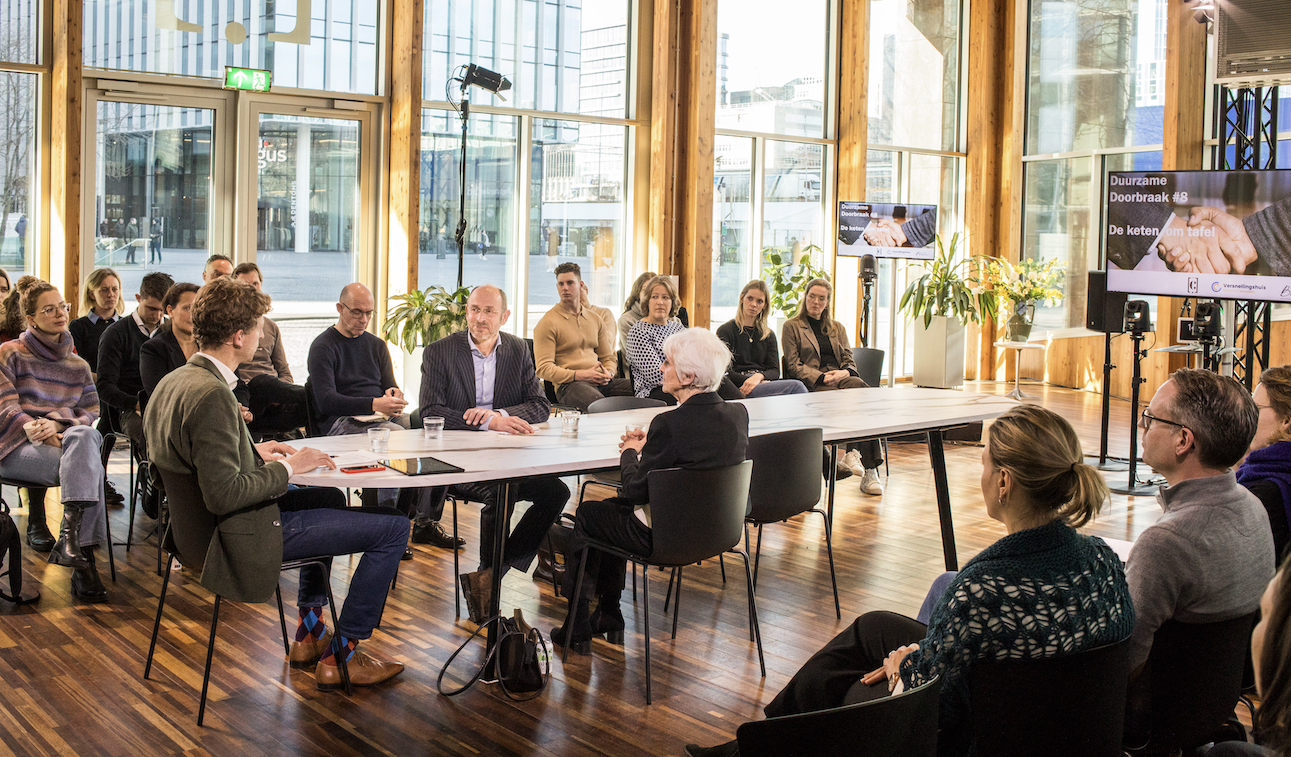Circularity is nothing new to Royal Ahrend. Since the late 1980s, the company has engaged in 'Ecodesign,' a principle that aims for modular design. Ecodesign makes furniture easy to disassemble and recycle. The company also started the Circular Hub in collaboration with Gispen and Presikhaaf School Furniture, where used furniture is refurbished and reintroduced to the market. Now, the focus at Royal Ahrend is on textile streams.
The more streams, the more waste
Ahrend deals with over five different streams: materials like wool, (artificial) leather, polyester, and laminated fabrics, which involve different materials being glued together. All of them lead to residual materials in the production of their furniture. The company has already made progress by adopting monobacking, which uses the same materials for the fabric and glue, as an initial solution to the problem.
Lizzy Stuyfzand, product manager of materialization at Royal Ahrend, says: "For years, Ahrend has been developing circular chain collaboration for textile waste with innovation partners. We work with social enterprises like i-did to recycle felt from our textiles, and Vanhulley produces accessories from our surplus materials. However, we still haven't been able to find a large-scale market. Some suppliers have minimum order quantities, so sometimes we have to purchase more fabric than we need." This also contributes to excess inventory. "Currently, we work with a donation model to dispose of our residual materials. For now, that's a good solution. We aim to reduce the amount of residual material as much as possible. To achieve this, scalability and continuity are important. Potential partners must meet quality and sustainability requirements. How can we best approach this?"
Look outside the chain
Jacqueline Cramer, professor of Sustainable Innovation at Utrecht University, and Antoine Heideveld, director of The Green Brain also have a seat at the table. As a network of scientists, The Green Brain is committed to a circular, inclusive economy. Cramer sees Royal Ahrend as a sustainable leader. "Ahrend is a frontrunner in sustainability. Try to get competitors from the same sector on board to set up a chain initiative. Together, you are big enough to set sustainable quality requirements for raw and imported materials."
Heideveld sees opportunities outside Royal Ahrend's familiar network: look at parties dealing with similar streams. An example is the fashion industry, where companies are increasingly looking for suitable secondary fibers, and there are significant residual streams. By creating a joint market demand, you have more leverage and create a market. All you need for this is to look beyond your residual stream. "Collaboration is the solution."
Learn more
· Terugkijken: Duurzame Doorbraak: De keten om tafel (in Dutch)
· Visit website of Koninklijke Ahrend (in Dutch)
The Circular Economy Week is organized by Versnellingshuis Netherlands Circular! Versnellingshuis helps chains to accelerate towards a circular economy and is a collaboration between the Ministry of Infrastructure and Water Management, VNO-NCW/MKB-Nederland, The Green Brain, MVO Nederland, and RVO.
